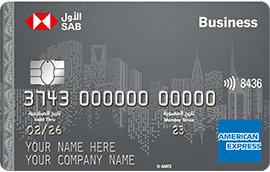When the profit rate is practically free, your company might be able to afford to leverage debt as a tool. But as profit rates rise, or your need for capital to grow your business increases, your company's need for low cost cash can increase, too. The secret that smart businesses already know is that the opportunity cost of leaving money in the balance sheet is too high and best-in-class organizations are always ensuring they optimize working capital management and leave no cash hidden.
Companies that have been spoiled by low profit rates can end up leaving heaps of cash on the table. According to The Hackett Group, a strategic consultancy that conducts benchmarking studies for corporations globally, U.S. companies leave about $1 trillion in working capital un-invested. A global study by PwC Global pegs that number at more than $1.4 trillion USD.
That's where working capital management comes in. By shortening the cash conversion cycle, the number of days cash is tied-up in working capital to run daily operations, companies can put their working capital to work for other purposes — namely, freeing up cash to fuel growth.
That strategy doesn't kick in overnight, though, says Veronica Wills, The Hackett Group's associate principal and North American working capital practice lead.
“Working capital management really is a culture you build in your company. It's a learned skill, not something people just naturally know how to do," she says. “It has to be embedded in every single functional process that contributes to working capital, which are many."
Leveraging extended Days Payable Outstanding (DPO) is one of those processes, and financial instruments such as corporate credit cards play a significant part giving companies more time to pay suppliers.
“A lot more companies are leveraging that as a tool in their overall supplier payment strategy," Wills says.
American Express unsecured credit can help companies take that strategy one step further. It allows companies to access an alternative source of funding beyond their traditional bank relationships. By using American Express payment solutions companies can get access to a grace period of up to 55* days without profit rate, while improving relationships with their suppliers by using Amex funds to pay them right away. Businesses can then extend their DPO by paying off their Amex corporate card or other payment solution much later, effectively holding on to their money longer.
For example, the business could use American Express unsecured credit to pay a supplier on day 30, instead of pushing the payment out to 90 days or longer. The company would be able to realize their extended DPO goals while still keeping their supplier happier.
The payment terms you negotiate with suppliers can be the biggest driver of DPO. Wills suggests negotiating terms with your large and midsize suppliers, which might comprise only a quarter of your supplier base.
Smaller suppliers — the “tail" of your base — might only contribute about 5 percent of your spend, but could account for the remaining three-fourths of the suppliers you deal with. They're also more likely to resist extended terms.
By carefully managing this tail spend, companies can realize savings of 10 to 20 percent, while increasing their strategically-managed spend — the spend from the larger and midsize suppliers — by 86 percent or more.
For that group of suppliers, Wills says it makes the most sense to use a corporate purchasing card so you can take advantage of those extra days.
“You don't have to go through the noise of trying to negotiate terms with tiny suppliers that in aggregate aren't going to influence your DPO number that much anyway, even if you are successful."
American Express is uniquely structured to onboard vendors to accept B2B payments. Amex operates as a closed loop being an issuer of payment products such as corporate cards and also operating the network where transactions take place. Because of this structure American Express has direct relationships with merchants and is able to facilitate conversations about the mutual benefits possible when accepting B2B payments.
Another way companies can optimize their working capital is by accepting virtual payments, such as card and card-less payments, from their customers.
It can take five to seven days to receive and process a cheque, once the supplier has sent it which can take much longer, versus one or two days to accept an electronic payment. Plus, businesses opting for manual payments would need to consider the costs involved with writing and printing paper cheques, postage costs as well as the significant time employees are spending on the task.
“Manual payments are very expensive," Wills says. “Being able to automate that process has a huge efficiency savings associated with it as well as improving the float."
If you're managing a small or mid-size company, working capital management techniques could serve the greatest benefit to an organization of your size. Since there is plenty of room to grow and mature, their working capital needs can increase significantly.
According to Wills, it's important for such companies to manage their working capital efficiently so their needs don't outpace the organization's growth.
“Efficient management of working capital needs to be embedded at every step of the way," Wills says. “If you take your eye off working capital, it can take a really long time to get back to the place where everybody is focusing on managing it."
*The number of days varies based on a variety of factors, including when charges are posted to your account, whether your account is in good standing, and the closing date of your statement.
This article is intended for general informational purposes only and does not constitute legal advice or an opinion on any issue. It shouldd not be regarded as comprehensive or a substitue for professional advice.

 Saudi Arabia
Saudi Arabia 











